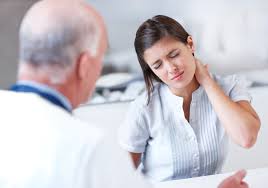Four Things You May Not Know About Chiropractic Care in the 21st Century
Even as adults, a surprising number of our beliefs are shaped by “casual” or “informal” sources of information, including watercooler conversations with colleagues at work, social media exchanges with friends and family and pop-culture references on TV. Most of the time, we’re not aware of the cumulative effect that this sort of information has on our view of the world—or how much of worldview is really second- or third-hand. Not surprisingly, this is even true when it comes to heath and healthcare. 
According to the Pew Research Center, people look to a variety of sources for health-related background, advice and support. For example:
- 13% Consult online reviews of drugs
- 21% Get information, care or support from others with the same condition
- 28% Go online for a diagnosis
- 33% Have participated in an online social activity related to health in the last year
- 50% Gather health information online
- 54% Get information, care or support from friends and family
While access to high-quality health information is undeniably a good thing for the public at large, it can be difficult for most people to judge the accuracy and appropriateness of what they read or hear. This is particularly true on the Internet, where the flow of new misinformation is often accelerated and amplified and where old ideas and misconceptions can be easily repeated and sustained.
In light of new media trends, we thought it might be a good idea to share three facts about chiropractic care in the 21st century—facts that sometimes get lost in all the “noise” about healthcare.
Chiropractic care is NOT on the “fringes” of modern healthcare. And it hasn’t been for years.
According to the National Board of Chiropractic Examiners, chiropractic is the third largest primary healthcare profession in the U.S. (surpassed only by medical doctors and dentists), with over 70,000 active licenses. In addition, the National Center for Health Statistics has reported that 8.5% of the American adult population used chiropractic or osteopathic manipulation in 2012—and that this percentage was significantly higher in many regions of the country.
Chiropractic care has a proven track record in treating a variety of musculoskeletal conditions—particularly back and neck problems—without the use of drugs or surgery.
Over the years, teams from leading academic institutions have published study findings that document the effectiveness chiropractic care in a variety of well-respected, peer-reviewed journals. Public health and consumer research organizations have also regularly reported on the high level of patient satisfaction achieved by chiropractic physicians.
Back in 2010, the U.S. Department of Health and Human Services delivered to Congress a report that detailed its findings from a “demonstration project” designed to assess the effects of expanding Medicare coverage for chiropractic services. As part of this work, researchers conducted a satisfaction survey of chiropractic patients. Here’s an excerpt of what they found:
“Sixty percent of respondents indicated that they received ‘complete’ or ‘a lot’ of relief of symptoms from their chiropractic treatments. Satisfaction with care was high, with 87 percent reporting levels of 8 or higher on a 10-point scale and 56 percent indicating a perfect score of 10.”
Interestingly, the Consumer Reports Health Ratings Center came to a very similar conclusion based on its own survey data. The Center reported that a larger percentage of patients (59%) were highly satisfied with the back pain treatment and advice they received from chiropractors than were satisfied with the care provided by any other type of healthcare professional. By way of comparison, 44% of patients were highly satisfied with care provided by a specialist physician and only 34% were highly satisfied with care provided by a primary care physician.
Chiropractic care is increasingly provided as part of an integrated, cross-disciplinary approach to the treatment of musculoskeletal problems at leading medical centers and local clinics.
Here’s just one example: At the prestigious Cleveland Clinic, “Chiropractic physicians are established members of the mainstream medical team. They treat problems involving the muscles, tendons, ligaments, bones, cartilage and nervous system.”
Get Relief From Your Lower Back Pain or Neck Pain – See Your Chiropractor Wilmington NC
If you suffer from pain in your back or neck, Southeastern Healthcare can help you find lasting relief and improved mobility. And best of all, we can do it without using dangerous, habit-forming drugs or other risky treatment methods. Call us today at 910-790-3666. We are here for you. Our chiropractic team can help you manage your pain naturally and effectively. Discover for yourself the difference that safe and effective chiropractor Wilmington NC care can make. With six locations throughout the Wilmington area, we have an office conveniently close to you.



 A growing number of families in the U.S.—both parents and children—are discovering the benefits of complementary and alternative medicine (CAM), including chiropractic care. The good news is that you’re never too young or too old to benefit from the types of therapies a skilled chiropractic physician can provide. Today’s chiropractors generally have the training and experience to work with patients from early childhood through to advanced age. However, some practitioners also choose to focus on the unique needs of specific types of patients.
A growing number of families in the U.S.—both parents and children—are discovering the benefits of complementary and alternative medicine (CAM), including chiropractic care. The good news is that you’re never too young or too old to benefit from the types of therapies a skilled chiropractic physician can provide. Today’s chiropractors generally have the training and experience to work with patients from early childhood through to advanced age. However, some practitioners also choose to focus on the unique needs of specific types of patients. As anyone who has a long commute to work or drives for a living can tell you, driving can take a toll on your body, especially your back!
As anyone who has a long commute to work or drives for a living can tell you, driving can take a toll on your body, especially your back! Although it may not seem like it, water polo is a very physically demanding sport. Its players are required to spend an hour and fifteen minutes in a pool, during which they cover a distance of as much as three kilometers. There is a good deal of physical contact above and below water. In addition, teammates must shoot and pass the ball without the benefit of contact with the ground to help generate force in the upper body.
Although it may not seem like it, water polo is a very physically demanding sport. Its players are required to spend an hour and fifteen minutes in a pool, during which they cover a distance of as much as three kilometers. There is a good deal of physical contact above and below water. In addition, teammates must shoot and pass the ball without the benefit of contact with the ground to help generate force in the upper body.